
10 Amazing Shark Breeds
Published in Entertainment at April 13th, 2017 at 11:40 AM
Every Species of animal has their unique and special breeds that stand out from one enough in strange and sometimes weird ways. We have gathered 10 amazing breeds of sharks with some interesting results.
Great White Shark
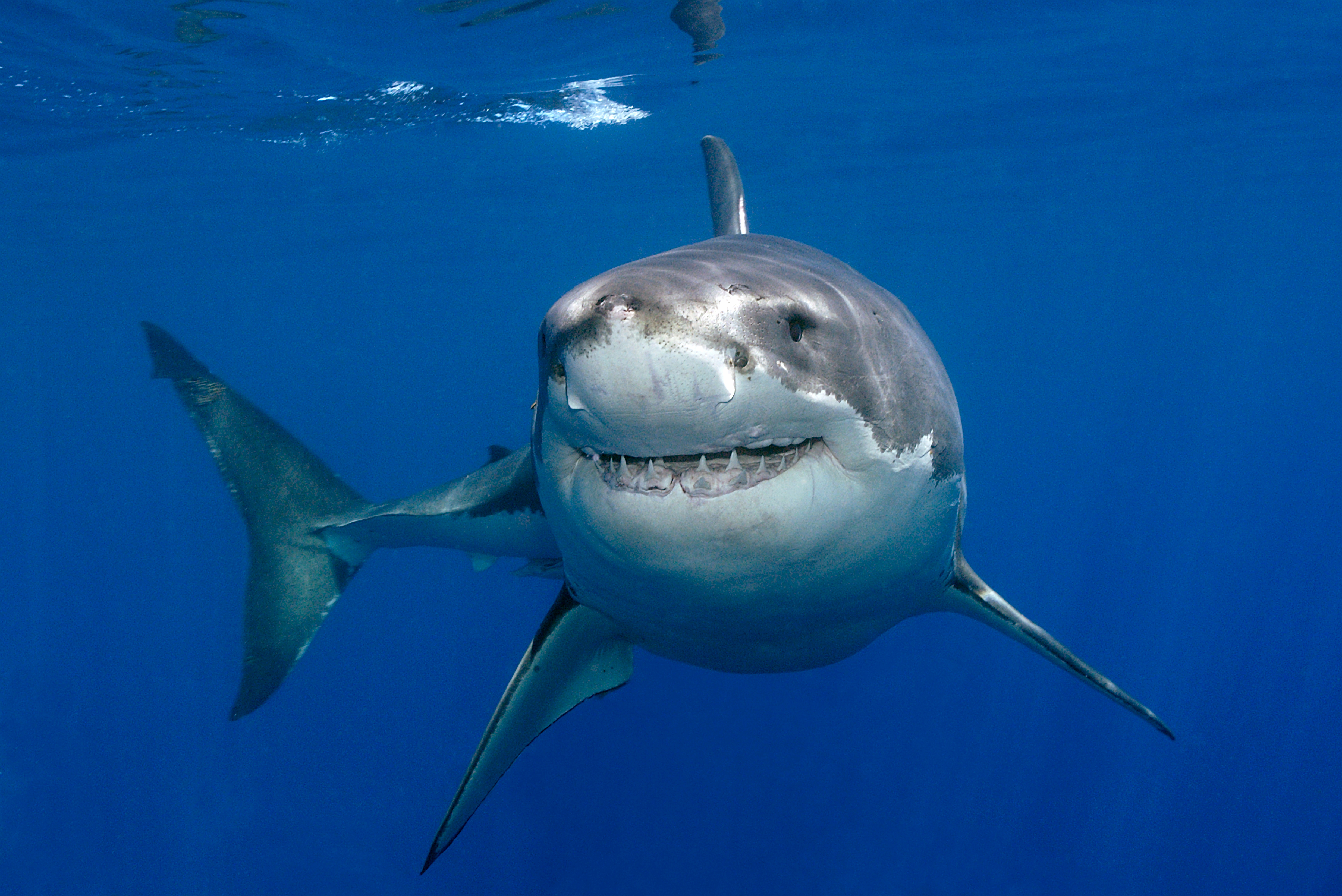
Let’s get the most obvious breed out of the way with what is probably seas most natural predator.The great white shark is an exceptionally large lamniform shark found in coastal surface waters in all major oceans. These beasts are more that 20 feet in length and weigh almost a staggering 5,000 lbs. The great white shark is arguably the world’s largest known predatory fish and is said to be the only surviving species of its genus. More than any documented attack, Peter Benchley’s best selling novel Jaws and the subsequent 1975 film adaptation directed by Steven Spielberg provided the great white shark with the image of a “man eater” in the eyes of the public and while it is true that these great whites have been responsible for viciously attacking humans, they typically do not target humans specifically as prey. Some attacks are fatal sure, however most attacks leave little to no injuries on the victims. They can be dangerous creatures, but not as dangerous as media has led us all to believe.
Hammerhead Shark
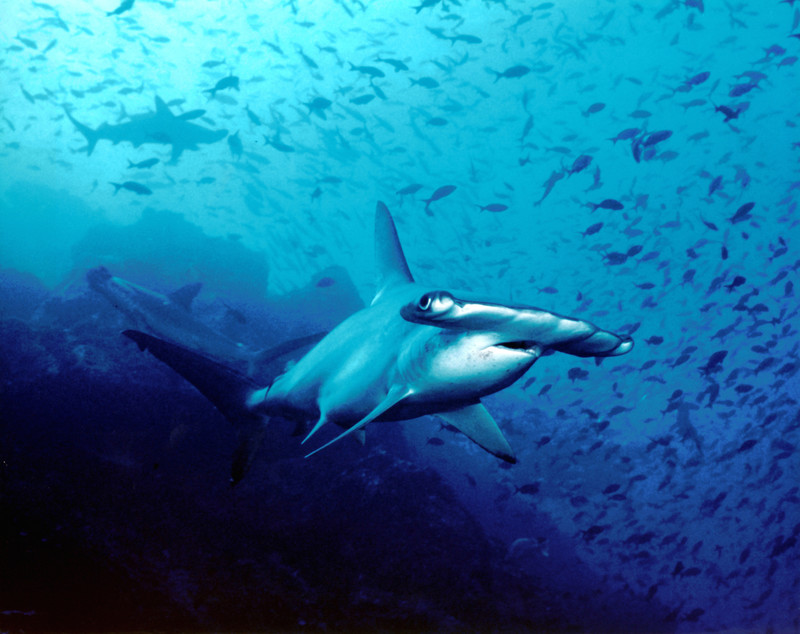
The hammerhead sharks are a group of sharks so named for the unusual and distinctive structure of their heads, which are flattened and laterally extended into a “hammer” shape called a “cephalofoil”. The shark’s eyes and nostrils are at the tips of the extensions. The hammer shape of the head was thought to help sharks find food, aiding in close-quarters maneuverability and allowing the shark to turn sharply without losing stability. Although their shape alone is interestingly unusual, It wasn’t until late 2007 that scientists had discovered that hammerhead sharks have the ability to reproduce asexually through a rare method known as parthenogenesis meaning they are able to develop without the need of sperm. There are 9 sub species of Hammerhead sharks with only 3 being a danger to human life. These 3 species are the Scalloped Hammerhead, Great Hammerhead and Smooth hammerheads.
Cookiecutter Shark
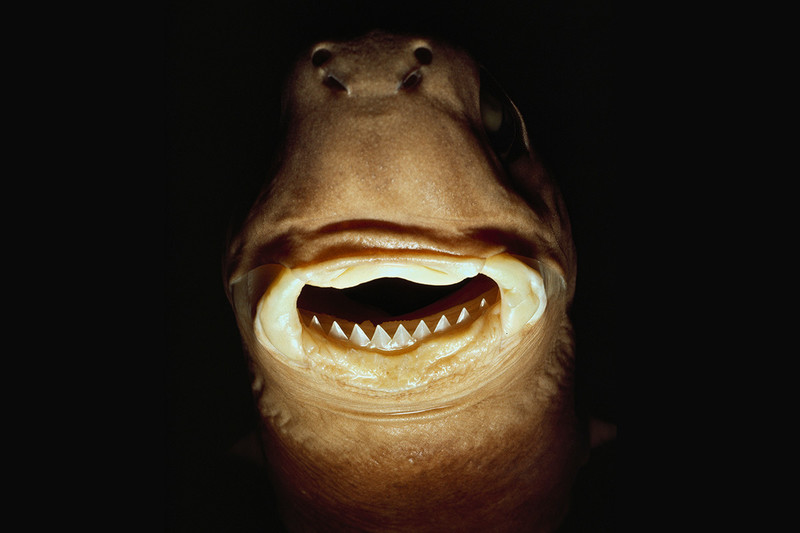
Probably the funniest looking shark on this list, The cookiecutter shark is a small, rarely-seen dogfish shark. It is one of the smallest shark species in the world but is known for having some rather unusual eating habits. The cookiecutter shark derived its name from its habit of removing small circular plugs of flesh similar to how cookie cutters remover circular plugs of cookie dough and skin from cetaceans and large fish, including other sharks. It is hypothesized that the shark attaches to its much larger prey with its suctorial lips and modified pharynx, then rotates its body to achieve a highly symmetrical cut. Even with their creepy eating habit, you have to admit, They look as stupid as drunk people trying to take a photo at a party.
Whale Shark
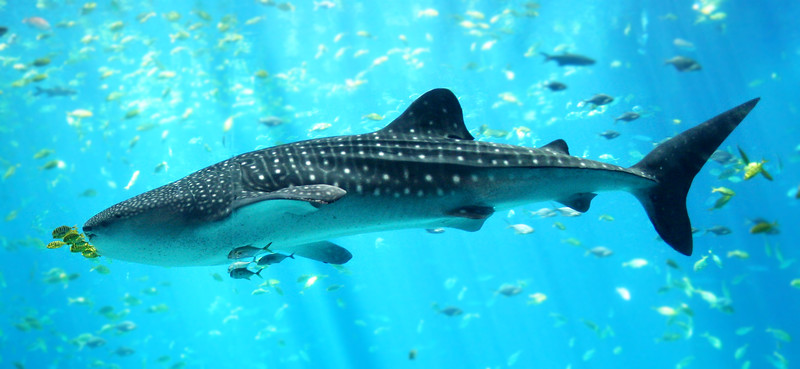
Rhincodon typus or more commonly known as “The Whale Shark” is a slow moving filter feeding shark that is reportedly the largest living fish species to date as It can grow up to 40 ft in length and weighs almost a staggering 15 tons. The whale shark can be found in tropical and warm oceans and is known to live in open waters. It has been reported that these sharks can live up to 70 years. The species is believed to have originated about 60 million years ago. Despite its enormous size, the whale shark does not pose any significant danger to humans as it is used as a example to educate people with the message of saying that “Not all sharks are man-eaters”. They are actually quite gentle and can be playful with divers. Divers and snorkelers can swim with this giant fish without any risk apart from unintentionally being struck by the shark’s large tail fin.
Frilled Shark
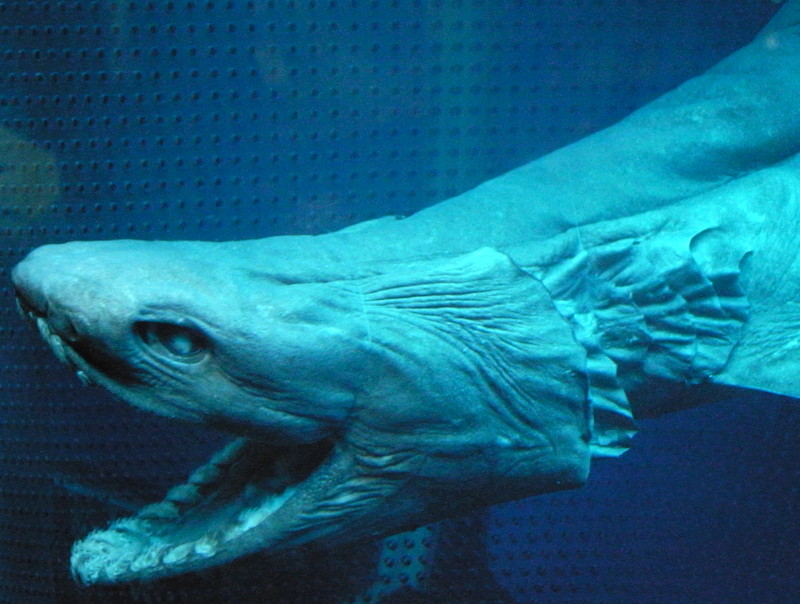
You might think at first glance that the frilled shark is just “an ugly, giant eel” but it is actually a living fossil shark species. The species was discovered until january of 2007 as a staff member of Awashima Marine Park in Shizuoka was alerted by fishermen who had caught a ’strange eel-like fish with razor sharp teeth’. The fish was identified as a pregnant female 1.6 m frilled shark and was captured by park staff who were concerned that the shark appeared to be unhealthy. They took it out of the water and put it into a saltwater tank. After only a few hours of captivity, the shark died a few hours after capture. The frilled shark is sometimes referred to as a living fossil partially because the species has changed little since pre-historic times. It was thought to be extinct until modern sightings in Japan.
Megamouth Shark
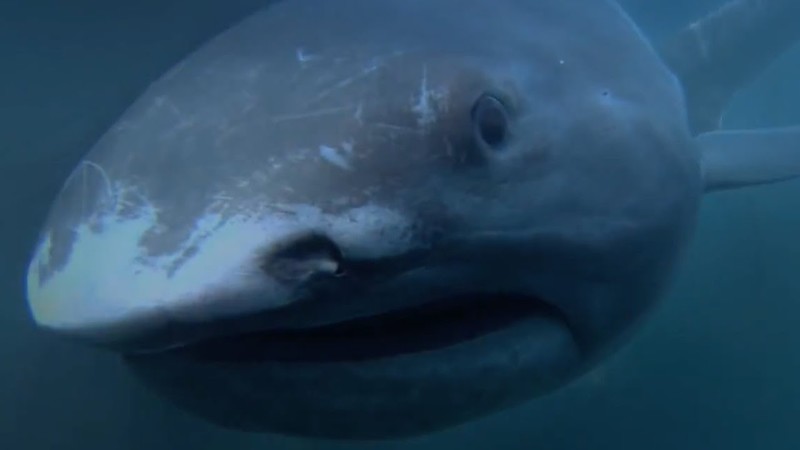
If the name of this beast wasn’t a dead giveaway, The megamouth is a well known species that is recognisable for it’s massive mouth, with thick rubbery lips that gives it an appearance unlike any other shark out there. As a matter of fact, it is so distinct that it is technically a part of it’s own species. It is part of the select group of planktivorous sharks that feeds mostly on plankton. Like its fellow members, the whale shark and basking shark, it is a filter-feeder. When it comes to size, The Megamouth is quite the giant, However in comparison to it’s other filter-feeding shark brothers, It is the smallest of the two. These sharks have been known to grow around 13-16 feet in length and averagely weigh around 2,600 lbs. Might be the smallest of it’s family but it’s still quite the beast.
Goblin Shark
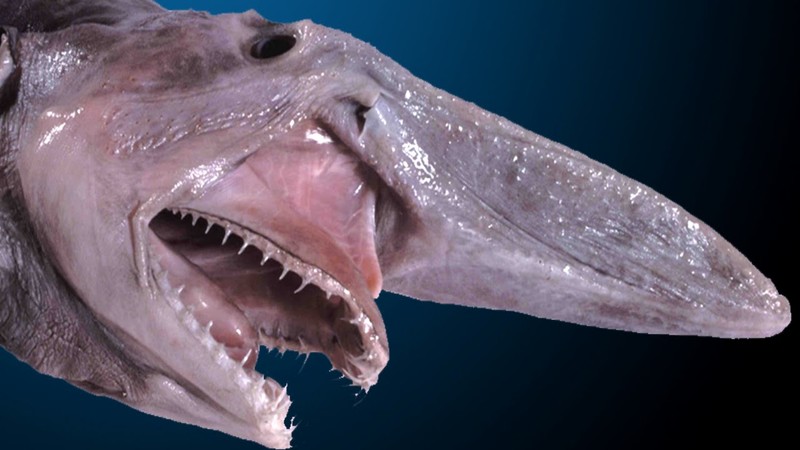
This shark looks like something out of H.R Giger’s nightmares. The Goblin Shark is a deep-sea shark and it’s most recognisable feature is without a doubt it’s very unorthodox shaped head as it has a very long, Pointed beak unlike most sharks which have more of a rounded nose and mouth. Some other distinguishing characteristics of the shark are the color of its body, which is mostly pink, and its long, protrusible jaws. By that description you can pretty much see why these sharks are named after Goblins. The Goblin shark hunts by sensing the presence of prey with electro-sensitive organs in the rostrum, or snout, due to the absence of light in the deep waters where it swims. It’s not until the shark finds it’s prey that it suddenly protrudes its jaws, while using a tongue-like muscle to suck the victim into its sharp front teeth. It’s not as viscious as some sharks on this list but it sure is practical.
Saw Shark
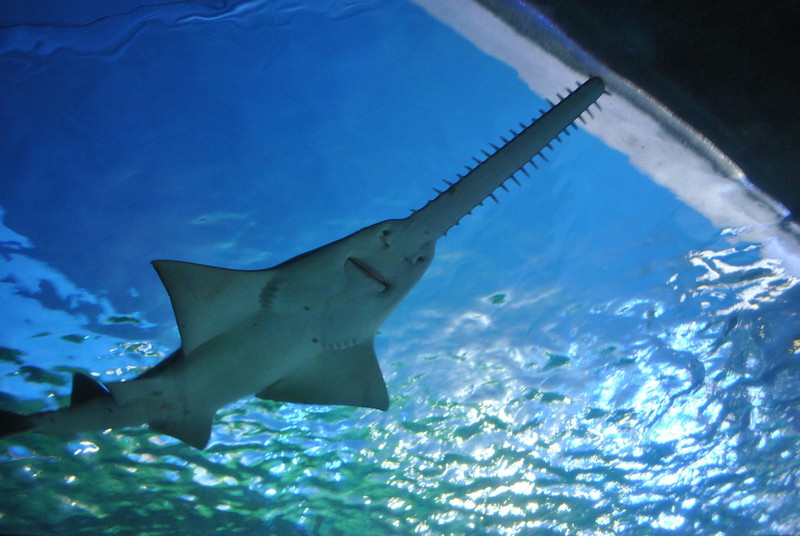
Much like the Hammerhead, the Sawshark is named after another tool you can find in your own shed. Okay besides that obvious comparison it is actually a group which is comprised out of several species of shark that share a very distinct appendage. In this case, their distinct appendage is an elongated snout with teeth on the sides that they use like a blade in order to capture and kill prey. It is a common misconception as most people mix up the Saw Shark with the Sawfish as they both have a very similar appendage as well as the fact they both belong to groups with that consist of different versions of their own species The sawshark is actually much smaller creature when compared to other sharks on this list as the Sawshark only averages a size 5.5 ft. Again in comparison with the Sawfish, The Sawfish is able to grow up to 23 ft making the Sawshark look really tiny in comparison. Again, Don’t let the size fool you as these sharks have the ability to really do some damage.
Wobbegong Shark
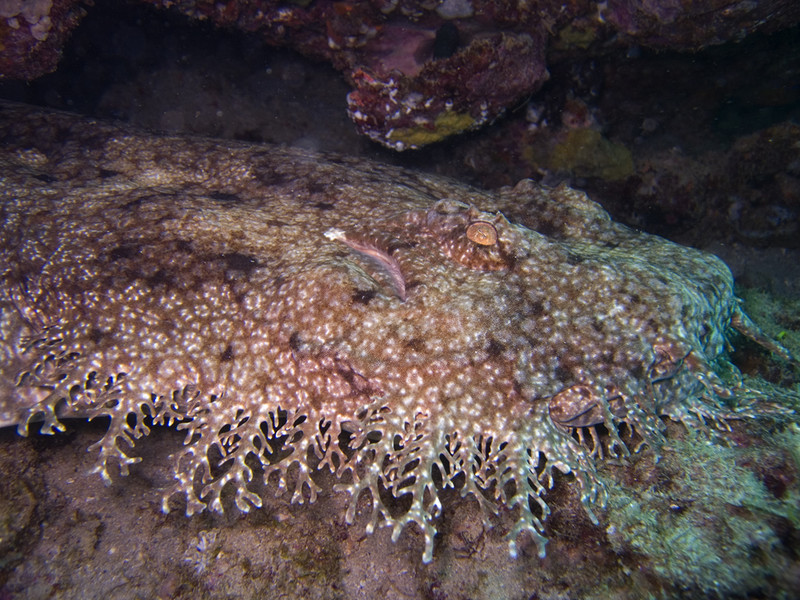
This among the weirdest of species as the The wobbegong shark is actually a group of carpet sharks that comprise of 12 different species. The name “carpet sharks” refers to an order of shark with colorful, ornate patterns on their back which can be reminiscent of a carpet. In the case of wobbegongs, the patterns are not meant to help them stand out or to attract prey, but rather to camouflage. Wobbegong sharks have a very unorthodox tactic when it comes to feeding as they will lie in wait at the bottom of the ocean and snatch up any prey that comes too close. Completing the camouflage is a series of lobes attached around the mouth of the shark which resemble weeds and help lure fish. These sharks are known to grow up to 10 ft in length, although most species measure less than half that.
Thresher Shark
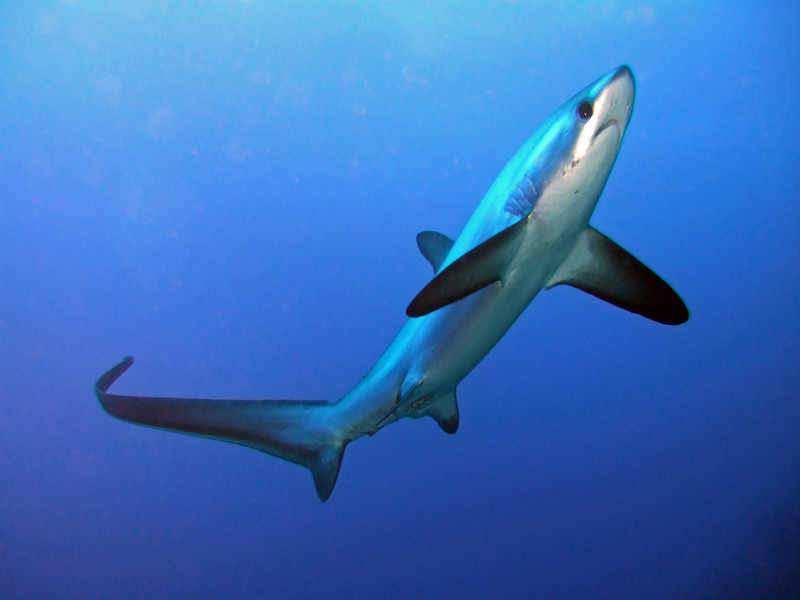
Coming full circle on the list, The thresher shark looks pretty standard when it comes to the shape of sharks with the exception of it’s absolutely massive tail. Depending on the species, the tail can get to be half its total length which can be up to 20 ft in the case of the common thresher shark, the largest species in the group. The smallest one is the pelagic thresher that only grows to 10 ft (3 m). The primary use of the tail is for catching prey as it takes a bit of a “Brute” method rather than the typically believed “Vicious” method that most people would think. The shark would weave through groups of fish and snap its tail as it goes. Afterwards, it would turn around and catch the fish that have been stunned by the tail.




